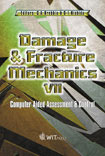Possibilities Of Use Of Springs From Long-fiber Glass Reinforced Composites In Suspensions Of Road And Rail Freight Vehicles
Price
Free (open access)
Transaction
Volume
37
Pages
Published
2002
Size
447 kb
Paper DOI
10.2495/DM020421
Copyright
WIT Press
Author(s)
I Cerný, I Fürbacher & R M Mayer
Abstract
Possibilities of use of springs from long-fiber glass reinforced composites in suspensions of road and rail freight vehicles I. Cerny1, I. Furbacher1 & R. M. Mayer2 1Strength Department, SVUM as., Praha, Czech Republic 2Sciotech Ltd., Yateley, Hampshire, U K. Abstract On the basis of recent advances in research and development, long fiber glass reinforced polymers (GRP) can be considered to be used in new areas of engineering machinery applications. Some specific properties of GRP materials like low specific weight, high strength, suitable or even excellent fatigue properties and low E-modulus are the most important characteristics enabling their use for special heavy-duty machinery components, like road-friendly leaf springs and suspensions including those for high capacity trailers or freight wagons. A necessity to adopt new design and development approaches, different from those being commonly used for designs with steels is discussed in the paper. On the basis of extensive laboratory static, dynamic and fatigue measurements, performed as a next step of FEM calculations, advantages and possible problems resulting from the new material applications are shown. 1 Introduction Composite materials, namely long fibre glass reinforced polymers (GRP), provide possibilities to be applied in high performance engineering structures [1,2]. Low specific weight, high strength, suitable or even excellent fatigue properties and low E-modulus, approximately 7-times lower in comparison with steel, together with favourable dynamic properties are the most important features offering their use as a material very suitable for a manufacture of road-
Keywords





